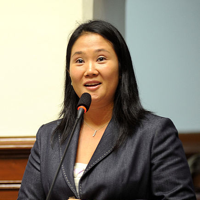When Peruvians went to the polls on April 10 to choose a new president, they faced an uncommon variety of choices. The fractured vote left no one with the required majority, producing another extraordinary field for the second-round voting on June 5. The top two vote-getters bring minimal experience and maximum polemic. In the not-very-kind words of Mario Vargas Llosa, Peru's Nobel Prize- winning author, it's like "choosing between AIDS and cancer."
Peruvians hope their Nobel laureate was using hyperbole in his choice of metaphors, but though they might disagree over the reasons why, most are indeed deeply concerned about who their next president will be. The two candidates facing off in the second round are Ollanta Humala and Keiko Fujimori, two sharply different and enormously controversial personalities. But while both raise misgivings among observers and voters, the real source of the concerns lies less in the candidates themselves than in the names that will appear alongside theirs, in invisible ink, on the ballot. Behind each candidate looms another larger-than-life persona, and while the ballot may list Ollanta Humala and Keiko Fujimori as the two choices, the campaign is really about those ghost candidates.
In the case of Humala, a leftist leader of a failed military coup, it is the distinct outline of Venezuelan President Hugo Chávez that many voters will see. Meanwhile, the 35-year-old Fujimori is overshadowed by the image and legacy of her father, the now-imprisoned former President Alberto Fujimori.

